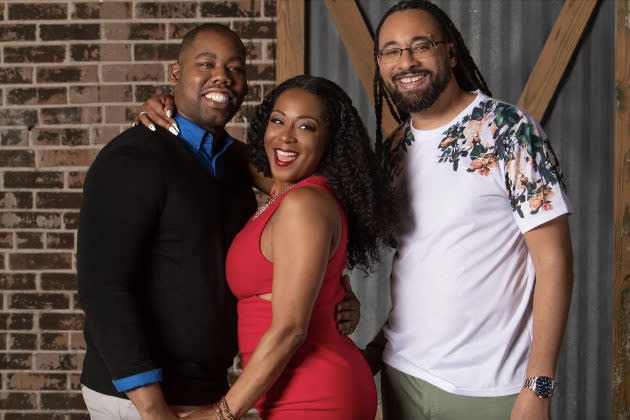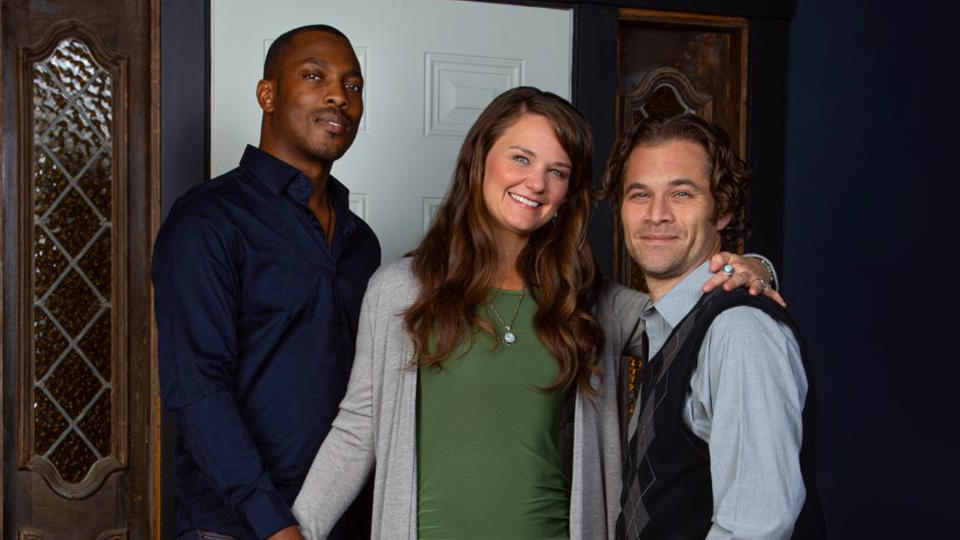Inside the New Reality Show About Women Who Want More Than One Husband

A number of women are in search of non-traditional relationships too, as seen in TLC’s latest show Seeking Brother Husband. The six-episode series focuses on four polyamorous relationships where the women are looking for additional male partners to enter into their current partnership(s). Airing every Sunday night, the show serves as the sister show to TLC’s Seeking Sister Wife, which came out in 2018.
“This is the very first show on national television that highlights poly women [exclusively],” says Kenya Stevens, who appears on the show with both of her husbands, Carl Stevens and Tiger.
More from Rolling Stone
Taylor Swift Fans Get Married at Eras Tour Concert: 'It Was Really Thrilling'
TLC and Shaggy Announce 'Hot Summer Nights' Tour With En Vogue and Sean Kingston
The Stevens’ have been married close to 30 years and Kenya has been in her second marriage for approximately ten. Four years into Kenya’s marriage with Carl, she found herself in love with another man. Years after Kenya’s romantic confession, Carl confessed that he’d fallen for a coworker. Kenya was excited for her husband to open up their relationship, just so long as she’d have the same freedom to do so.
“Women are not similar to men who set up poly lifestyles,” Kenya tells Rolling Stone. “We have our own way of doing it and it’s freedom-based and equitable.”
The Stevens’ are no strangers to television. They’ve had several television contracts where they have discussed the process of opening their relationship, while promoting their business Progressive Love Academy — a learning academy that claims to give its thousands of students the tools and expertise on communicating openly and loving freely in all types of relationships.
As a result of their work, TLC asked them to be a part of their show. While the network has offered a platform where polyamory can be seen, properly defined, and in some ways debunked for the masses, it’s hard not to notice the ways in which the show feels limiting. Granted, limiting things to only six 45-minute episodes that showcase four relationships makes showing the full scope of women-led polyamory hard, but with polyamory already being a misunderstood relationship practice at the national level, the first episode, whether intentional or not, makes it easy for American viewers to assume the stereotypical misconceptions.

“The executives at TLC seemed to have a hard time understanding that women don’t set up our poly relationships like sister wives, where our partners cannot have other partners,” says Kenya. “They were constantly asking me to explain, ‘What is polyandry?’’ ‘What is polyamory?’”
When the pilot opens, Kenya’s voice welcomes the audience with a clear-cut description of polyandry being “the practice of one woman having multiple husbands.” It then cuts to her and her husband wearing all-white with her declaring, “I have two husbands who love me!” And while the latter is true, what isn’t mentioned is that Carl is also married to someone else, and her second husband Tiger has other partnerships outside of their union.
“I thought it was misleading. None of the women on the show are polyandrous. All of us are polyamorous. We are open to our partners having other partners,” she explains. “Even to the end of the show, they didn’t allow us to have our husband’s other partners on the show. It was us with our husbands, the primary partners, and all of our male partners.”
The conversation around polyamorous relationships isn’t new. Literature and films such as The Ethical Slut and You Me Her have addressed the different ways consensual and ethical non-monogamy takes shape for people, clearly defining what the relationship style is: partnership with more than two people that’s rooted in honest communication, and also what it’s not: the unethical practice of a person justifying their desire to have sex with multiple people by entering into multiple relationships.
“It’s hard to say whether the representation has gotten better because the concept of polyamory is very new to most people,” says Willie Burnley Jr., city councilor of Somerville, Massachusetts, and a polyamory advocate. “More people are familiar with swinging and polygamy, so the media portrayals often revert back to those understandings, and I think that is where [television] titles like Sister Wives and Brother Husband are rooted in ideas of the patriarchal portrayal of multiple relationships. In reality, most of the polyamorous community is focused on having egalitarian relationships.”
Even the terminology of non-monogamy and polyamory can be specific and nuanced. Consensual non-monogamy, an umbrella term that polyamory and polygamy fall under, takes different forms depending on the relationship pairing(s). It could mean having multiple concurrent sexual relationships where partners agree not to emotionally connect to other people. It could mean what Kenya and her partners do, which is polyamory, where partners agree to be sexually and emotionally connected to other partners.
“I think media portrayals are becoming more informed and we are seeing an increasing number of media outlets that are covering it in a neutral to positive way,” says Heath Schechinger, co-founder of the Polyamory Legal Advocacy Coalition. “This is part of a broader movement that is focusing on families and relationships that fall outside of the traditional nuclear norm. Our laws and cultural norms were established to support a nuclear family structure that does not reflect the needs of our families today.”
In conducting studies regarding American family life, Schechinger has found that most Americans are single or are a member of blended families. This phenomenon has also been documented by Dr. Dianne Stewart, whose book Black Women, Black Love: America’s War on African American Marriage chronicles the disruption of Black families starting from slavery, and the forceful tactics placed on them to adopt the capitalistic relationship structure, even despite their lack of capital. From the findings of scholars like Stewart and Schechinger, the 1940s and ’50s was a time where America had narrowed in on Eurocentric ideas of the nuclear family: two-parent heterosexual couples with children.
“Marriage has always been a tool of social control,” reasons Alexander Chen, founding director of the Harvard Law School’s LGBTQ+ Advocacy Clinic who works alongside Schechinger to advocate for policy changes for poly families. “It’s been a tool to allocate property between wealthy families, like who gets the castle or who owns the river. In medieval Europe, nobody gave a crap if peasants got married to each other, it wasn’t legally recognized, and the history of whose marriages were recognized in America reflect that as well. During Reconstruction, this was forced upon people. If you wanted to get your kids into educated schools or be allowed to live in certain communities, you had to look a certain kind of way and so people started to shift and adapt.”
And yet, there is a slow shift taking place in Massachusetts. Chen, Schechinger and Burnley Jr. are part of a collection of folks who just got the first city ordinance passed in Somerville allowing people to have more than one domestic partner. This follows a history-making decision three years prior when Somerville became the first municipality in the country to pass an ordinance on domestic partnerships to include polyamorous relationships, providing rights to people to care for all of their partners, such as the right to hospital visitations.
“There are three municipalities in Massachusetts: Somerville, Cambridge, and Arlington,” explains Chen. “Ordinances let more than two people be domestically partnered, which is a legal status but not the same as a marriage. Domestic partnerships were first pioneered in the LGBTQ+ context as a way for cities and states to recognize same-sex relationships that weren’t being recognized by the federal government. These cities revised existing domestic partnership ordinances to remove the requirement that only two people can do it together.”
It’s unclear what the future of Seeking Brother Husband is, as only one episode has aired (and was provided to press). Truth be told, it is refreshing to see and learn of the Black people on the show, such as the Stevens’ and their partner(s) — who Kenya says have no current interest in legal marriage and are spiritually married — navigating polyamory, which has been wrongfully branded “white people shit” on social media due to a lack of representation in polyamorous spaces and media over the years.
“As humans we are free, we should be free. I’m free to choose my life path, choose my own objectives,” says Kenya. “I can create my own life.”
Best of Rolling Stone

